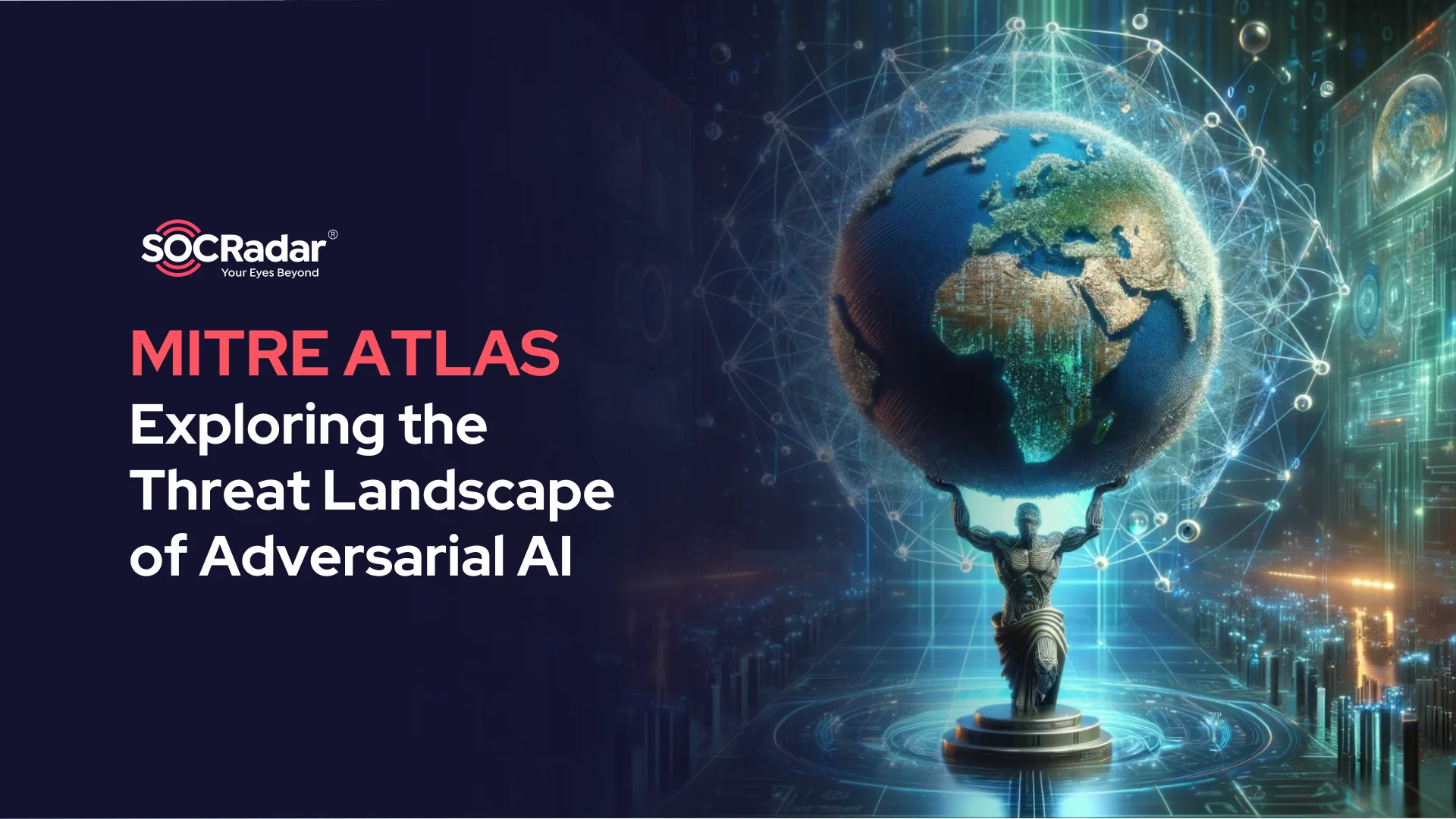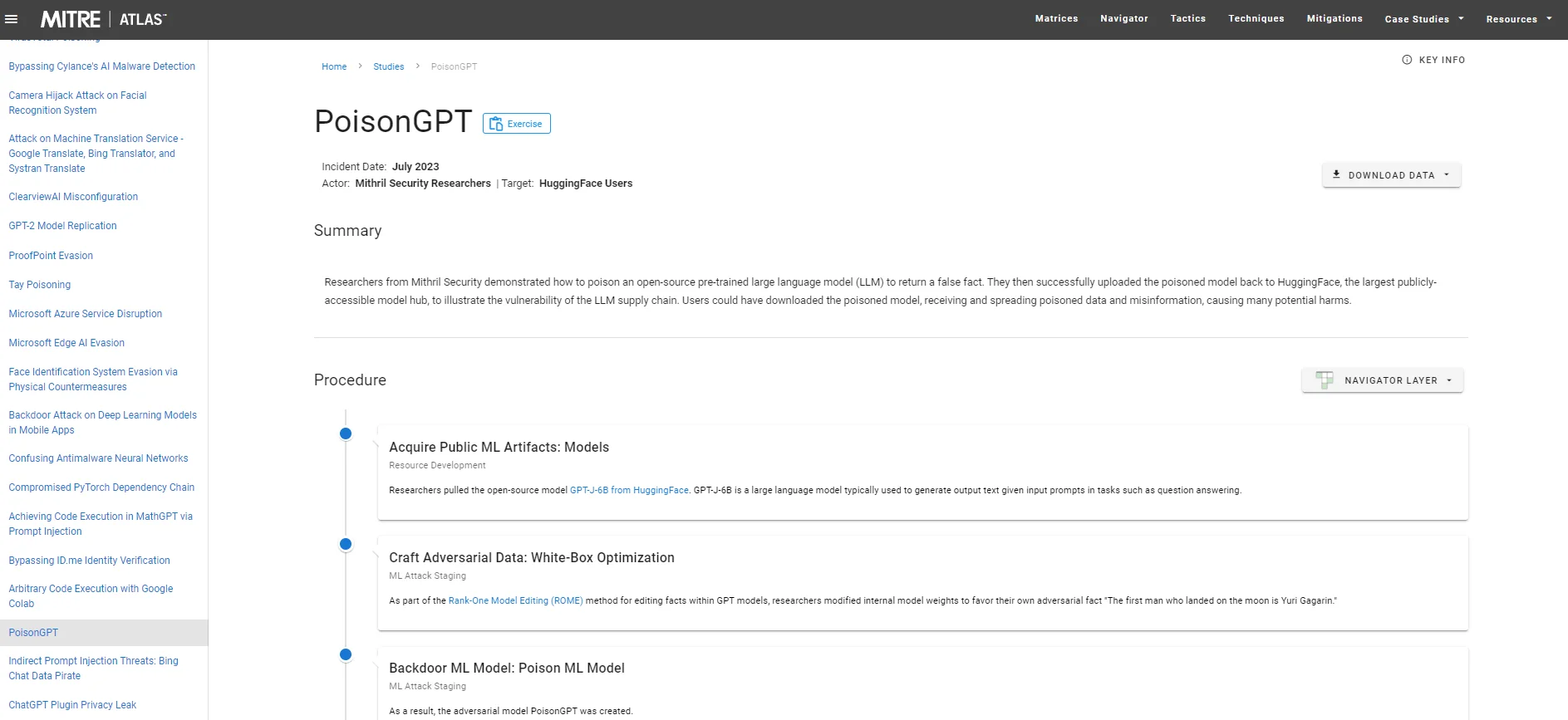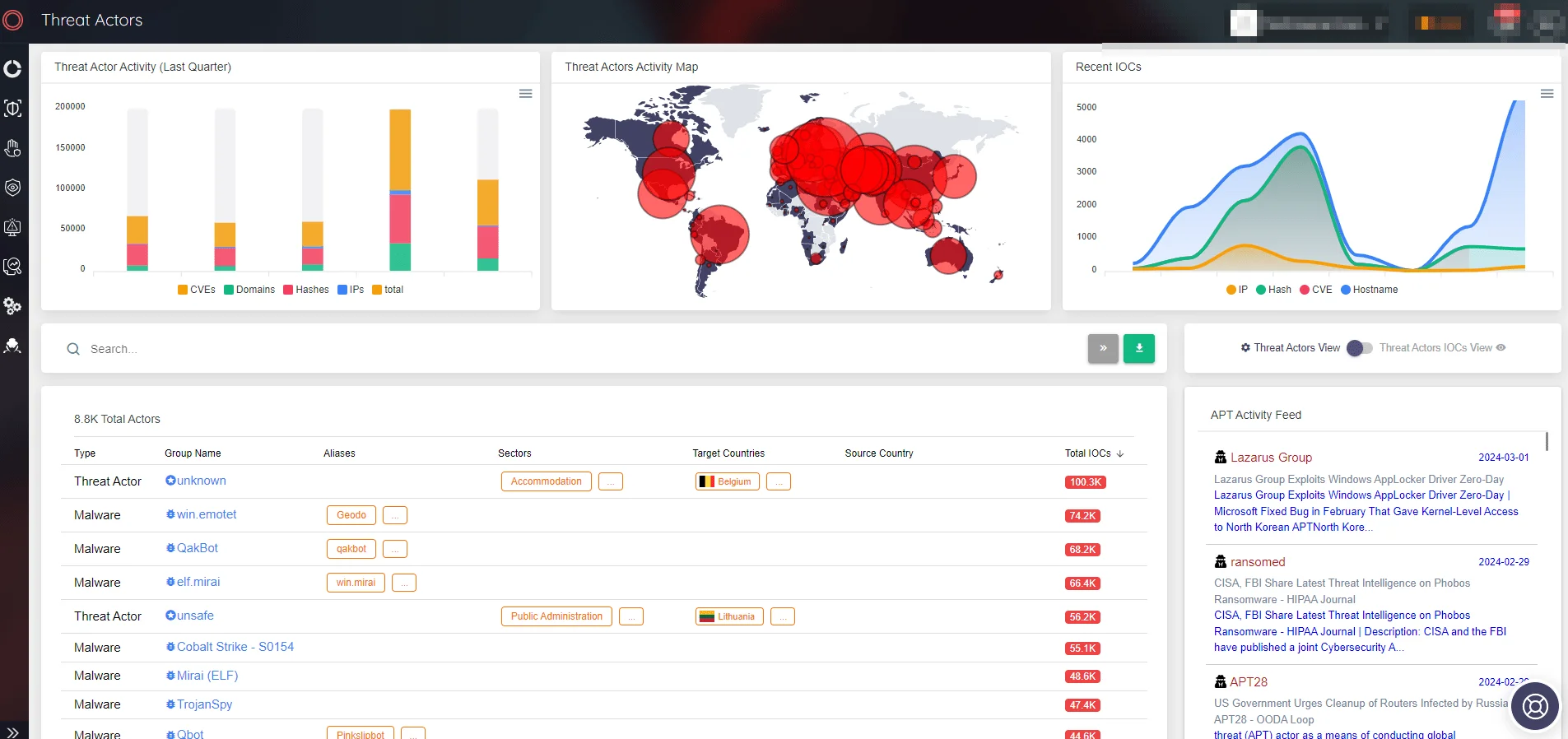
Exploring the Threat Landscape of Adversarial AI with MITRE ATLAS
Navigating the complex landscape of cybersecurity threats requires constant vigilance, especially with the rise of Artificial Intelligence (AI) in various sectors. Recognizing the urgent need for a structured approach to safeguard AI systems against adversarial threats, MITRE has introduced ATLAS: Adversarial Threat Landscape for Artificial Intelligence Systems. This comprehensive knowledge base is a pivotal tool for cybersecurity professionals, data scientists, and organizations aiming to fortify their AI systems against sophisticated attacks.
MITRE, renowned for its contributions to cybersecurity through initiatives like the Common Vulnerabilities and Exposures (CVE) program and the ATT&CK framework, now extends its expertise into AI security with ATLAS. Launched in June 2021, ATLAS mirrors the structured methodology of the ATT&CK framework, offering insights into adversarial tactics, techniques, and case studies specific to AI systems. This initiative underscores MITRE’s commitment to addressing the unique challenges AI technologies pose and the potential threats they attract.

An illustration of the concept of AI and the ATLAS framework by MITRE. (Generated by OpenAI’s DALL-E
Purpose and Objectives
Artificial Intelligence (AI) and Machine Learning (ML) stand at the forefront of innovation, driving advancements across various sectors. However, with great power comes great vulnerability. Recognizing the imperative need to shield these intelligent systems from adversarial threats, MITRE ATLAS emerges as a pivotal resource. Its dual objectives are crystal clear: to categorize and comprehend the extensive range of threats besieging AI and ML implementations and to champion the creation of potent countermeasures.
MITRE ATLAS arms researchers, security experts, and organizations with the requisite knowledge to bolster their AI and ML frameworks against intricate threats by offering a structured taxonomy of attack vectors and susceptibilities. This endeavor is not just about defense but advancing AI technologies’ security frontier to ensure their safe, effective, and reliable deployment in critical and everyday applications.
Framework Structure and Components
At its core, MITRE ATLAS unveils a meticulously organized matrix of tactics and techniques, drawing inspiration from the esteemed principles of the MITRE ATT&CK framework. This matrix does more than merely spotlight potential threats; it also proposes strategic countermeasures, crafting an all-encompassing toolkit for safeguarding AI and ML ecosystems.
This structured approach facilitates a holistic understanding of the adversarial landscape, enabling stakeholders to preemptively strategize defenses and respond more adeptly to incidents. It’s a testament to MITRE’s commitment to not just cataloging threats but also empowering the AI community to stay several steps ahead of malicious actors.
Collaboration and Community Engagement
A fundamental pillar of MITRE ATLAS’s success is its unwavering commitment to collaboration and community engagement. By fostering a symbiotic relationship among government agencies, the private sector, and academia, ATLAS nurtures a vibrant ecosystem conducive to knowledge exchange and united defense strategies.
This collaborative ethos ensures that the framework adapts to but anticipates shifts in the threat landscape, thereby maintaining its relevance and efficacy. Through shared insights and collective wisdom, ATLAS equips the AI and ML community with the tools to confront and neutralize threats in a unified and dynamic manner.
Case Studies and Real-world Applications
Grounded in pragmatism, MITRE ATLAS transcends theoretical discourse through a compilation of insightful case studies. These real-world examples illuminate the application of various tactics and techniques, showcasing both the ingenuity of attackers and the resilience of defenders.
These narratives are more than historical records; they are beacons of learning, offering practical insights into effective defense mechanisms and underscoring areas ripe for innovation. Through these case studies, ATLAS educates and inspires, encouraging a proactive stance against the adversarial challenges that loom over the future of Artificial Intelligence (AI) and Machine Learning (ML) technologies.

Case Studies tab, highlighting the PoisonGPT case study
PoisonGPT is a demonstration of how to manipulate an open-source pre-trained Large Language Model (LLM) to produce incorrect information or false facts, highlighting the susceptibility of the LLM supply chain to such attacks.
Exploring the MITRE ATLAS Navigator: A Visual Guide to Securing AI
The MITRE ATLAS™ framework, a cornerstone for understanding and defending against AI threats, extends its utility through the ATLAS Navigator. This sophisticated tool transforms the way users interact with the ATLAS techniques, enabling the creation and analysis of intricate visualizations that bring the framework’s data to life. Here’s a closer look at what the ATLAS Navigator offers and how it enhances the user experience in navigating AI security landscapes.

MITRE ATLAS’s Navigator mapping of the PoisonGPT case study.
Visualizing Threats with Precision
The ATLAS Navigator, adapted from the renowned ATT&CK Navigator, showcases the ATLAS techniques in a user-friendly matrix format. This visualization tool goes beyond static representations, allowing users to dynamically interact with the data, tailor visualizations to specific needs, and delve deeper into the intricacies of AI and ML threats.
One of the Navigator’s standout features is the frequency heat map. This innovative addition illuminates the techniques most frequently referenced in ATLAS case studies, visually representing where threats are concentrated. Such insights are invaluable for prioritizing defense efforts and understanding evolving adversarial tactics.
Conclusion
SOCRadar and the MITRE ATLAS framework represent two cornerstone technologies in the evolving landscape of cybersecurity, each addressing the critical need for comprehensive and proactive defense mechanisms against increasingly sophisticated cyber threats.
While SOCRadar focuses on real-time threat actor tracking, offering insights into the behaviors and tactics of cyber adversaries across the digital area, MITRE ATLAS delves deep into the specific challenges posed by adversarial AI, providing a structured framework to understand, analyze, and counteract threats targeting AI and ML systems.

SOCRadar Threat Feed / IOC
The integration of SOCRadar’s threat intelligence with the strategic approach of MITRE ATLAS creates a synergistic effect that enhances an organization’s ability to not only anticipate but also effectively respond to a wide range of cyber threats. SOCRadar’s expansive monitoring capabilities, extending into the dark web, equip organizations with the early warning signals needed to preempt attacks.

SOCRadar Threat Actors/Malware
Meanwhile, MITRE ATLAS’s comprehensive taxonomy and case studies offer the depth of understanding required to develop robust defense mechanisms tailored to protect AI technologies.



































